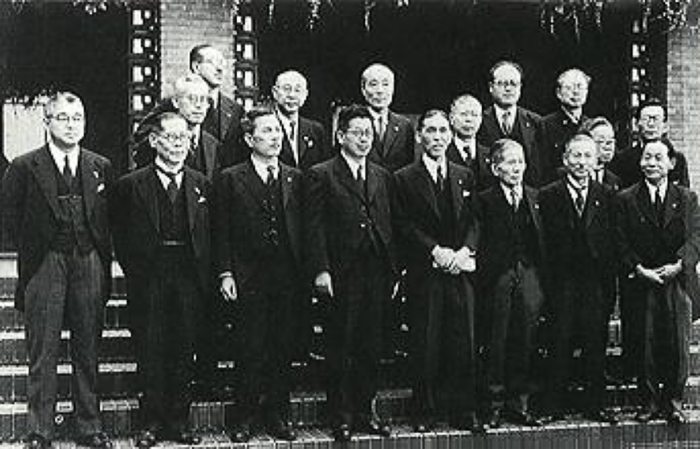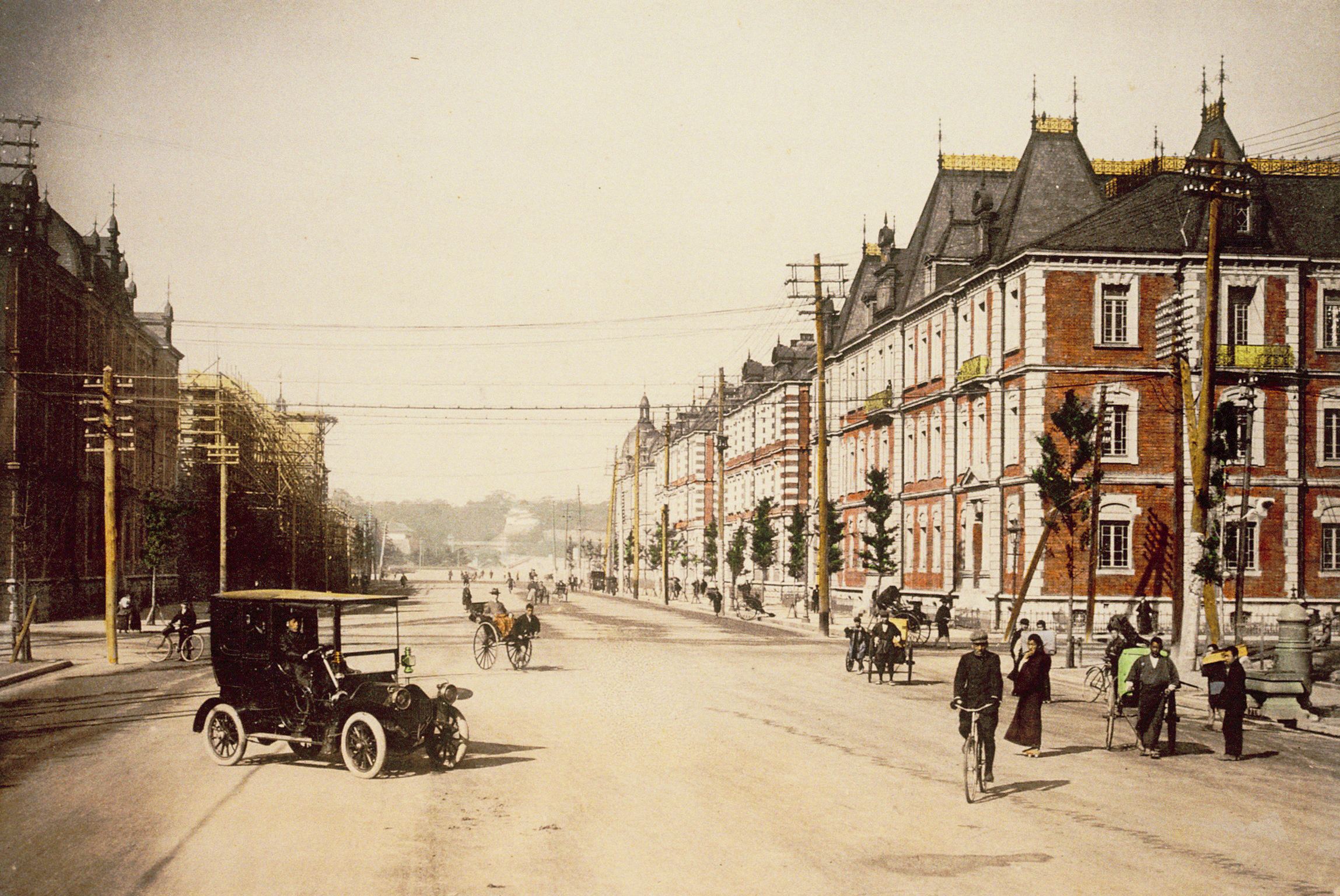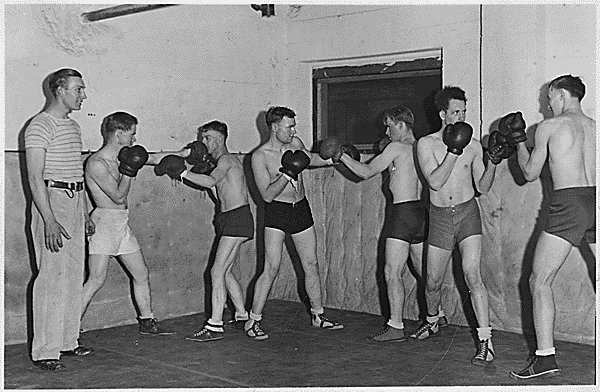|
Tetsu Katayama
was a Japanese politician who was Prime Minister of Japan from 1947 to 1948. He bears the distinction of having been the first socialist to serve as Prime Minister of Japan. Early life He was born in Tanabe, Wakayama Prefecture on 28 July 1887. He attended Tokyo Imperial University and received a bachelor's degree in law. Raised in the Christian faith, he was strongly influenced by the Christian socialism of Abe Isoo. After graduating, he opened a law office in a rented YMCA dormitory, and worked as an attorney. Early political career Katayama became secretary-general of the Social Democratic Party when it was established in 1926. He was elected to the House of Representatives, representing Kanagawa Prefecture, in 1930. Later in 1932, he joined the executive committee of the Socialist Masses Party. However, he was removed from the party since he did not participate in the session of the House on which Takao Saito was expelled from the House for his antimilitary speech. A ... [...More Info...] [...Related Items...] OR: [Wikipedia] [Google] [Baidu] |
Prime Minister Of Japan
The prime minister of Japan ( Japanese: 内閣総理大臣, Hepburn: ''Naikaku Sōri-Daijin'') is the head of government of Japan. The prime minister chairs the Cabinet of Japan and has the ability to select and dismiss its Ministers of State. The prime minister also serves as the civilian commander-in-chief of the Japan Self Defence Forces and as a sitting member of the House of Representatives. The individual is appointed by the emperor of Japan after being nominated by the National Diet The is the national legislature of Japan. It is composed of a lower house, called the House of Representatives (Japan), House of Representatives (, ''Shūgiin''), and an upper house, the House of Councillors (Japan), House of Councillors (, ... and must retain the nomination of the lower house and answer to parliament to remain in office. The position and nature of this title allow the holder to reside in and work at the Prime Minister's Official Residence (Japan), Prime Minist ... [...More Info...] [...Related Items...] OR: [Wikipedia] [Google] [Baidu] |
Japanese People
The are an East Asian ethnic group native to the Japanese archipelago."人類学上は,旧石器時代あるいは縄文時代以来,現在の北海道〜沖縄諸島(南西諸島)に住んだ集団を祖先にもつ人々。" () Japanese people constitute 97.9% of the population of the country of Japan. Worldwide, approximately 129 million people are of Japanese descent; of these, approximately 122.5 million are residents of Japan. People of Japanese ancestry who live outside Japan are referred to as , the Japanese diaspora. Depending on the context, the term may be limited or not to mainland Japanese people, specifically the Yamato (as opposed to Ryukyuan and Ainu people). Japanese people are one of the largest ethnic groups in the world. In recent decades, there has also been an increase in the number of multiracial people with both Japanese and non-Japanese roots, including half Japanese people. History Theories of origins Archaeological evidence ... [...More Info...] [...Related Items...] OR: [Wikipedia] [Google] [Baidu] |
Katayama Cabinet
The governed Japan under the leadership of Prime Minister Tetsu Katayama from May 1947 to March 1948. It was the first cabinet under the postwar constitution. Cabinet The Japan Socialist Party (''Nihon Shakaitō'', JSP) had emerged as strongest party from both the 23rd lower house election and the 1st upper house election. However, the formation of a coalition proved difficult as any majority coalition would involve at least two of the three largest parties. While the Socialists offered the conservative Japan Liberal Party (''Nihon Jiyūtō'', JLP) of incumbent prime minister Shigeru Yoshida a grand coalition, Yoshida refused active participation in the government. Under the new constitution, the prime minister was no longer selected by the Emperor, but elected by the Diet, "before the conduct of any other business" – and the Socialists pushed for an early vote to prevent the other two major parties from excluding them from a ruling coalition: on May 23, Socialist Te ... [...More Info...] [...Related Items...] OR: [Wikipedia] [Google] [Baidu] |
Suzuki Mosaburō
is a Japanese multinational corporation headquartered in Minami-ku, Hamamatsu, Japan. Suzuki manufactures automobiles, motorcycles, all-terrain vehicles (ATVs), outboard marine engines, wheelchairs and a variety of other small internal combustion engines. In 2016, Suzuki was the eleventh biggest automaker by production worldwide. Suzuki has over 45,000 employees and has 35 production facilities in 23 countries, and 133 distributors in 192 countries. The worldwide sales volume of automobiles is the world's tenth largest, while domestic sales volume is the third largest in the country. Suzuki's domestic motorcycle sales volume is the third largest in Japan. History In 1909, Michio Suzuki (1887–1982) founded the Suzuki Loom Works in the small seacoast village of Hamamatsu, Japan. Business boomed as Suzuki built weaving looms for Japan's giant silk industry. In 1929, Michio Suzuki invented a new type of weaving machine, which was exported overseas. The company's first 30 ... [...More Info...] [...Related Items...] OR: [Wikipedia] [Google] [Baidu] |
Zaibatsu
is a Japanese term referring to industrial and financial vertically integrated business conglomerates in the Empire of Japan, whose influence and size allowed control over significant parts of the Japanese economy from the Meiji period until the end of World War II. A ''zaibatsu'' general structure included a family-owned holding company on top, and a bank which financed the other, mostly industrial subsidiaries within them. Although the ''zaibatsu'' played an important role in the Japanese economy from the 1860s to 1945, they increased in number and importance following the Russo-Japanese War of 1904–1905, World War I and Japan's subsequent attempt to conquer East Asia during the inter-war period and World War II. After World War II they were dissolved by the Allied occupation forces and succeeded by the ''keiretsu'' (groups of banks, manufacturers, suppliers, and distributors). Equivalents to the ''zaibatsu'' can still be found in other countries, such as the '' chaebol ... [...More Info...] [...Related Items...] OR: [Wikipedia] [Google] [Baidu] |
National Cooperative Party
The was a centrist political party in Japan. History The party was established on 8 March 1947 as a merger of the Cooperative Democratic Party and the National Party following seven months of talks.Haruhiro Fukui (1985) ''Political parties of Asia and the Pacific'', Greenwood Press, pp576–577 The merger was the result of fears that a new electoral system would make it more difficult for small parties to gain representation. Although it initially had 78 MPs, a group of 15 led by Heima Hayashi left to join the Democratic Party. In the 1947 elections the party won 31 seats in the House of Representatives and nine in the House of Councillors. It joined Tetsu Katayama's coalition government and was given two cabinet positions; party chairman Takeo Miki was appointed Minister of Communications and Junzo Sasamori Minister in charge of the Demobilisation Agency. When Hitoshi Ashida formed a new government in 1948, the NCP remained in the coalition, with Okada Seiichi Okada (writt ... [...More Info...] [...Related Items...] OR: [Wikipedia] [Google] [Baidu] |
Democratic Party (Japan, 1947)
The , officially () was a conservative political party in Japan. History The party was founded in spring 1947 by merging the Progressive Party (Shinpo-tō) of Inukai Takeru with a faction of Liberal Party led by Hitoshi Ashida and obtained 124 seats in 1947 elections. The party had held seven seats in Tetsu Katayama's government in 1947-1948. For some months in 1948, party's leader Ashida was Prime minister. In March 1948, part of DP members led by Kijūrō Shidehara joined the Liberal Party The Liberal Party is any of many political parties around the world. The meaning of ''liberal'' varies around the world, ranging from liberal conservatism on the right to social liberalism on the left. __TOC__ Active liberal parties This is a l ... to form the Democratic Liberal Party. In 1949 elections, the DP got 69 seats. The party was finally merged with the National Cooperative Party to form the National Democratic Party in April 1950. Election results General election resu ... [...More Info...] [...Related Items...] OR: [Wikipedia] [Google] [Baidu] |
World War II
World War II or the Second World War, often abbreviated as WWII or WW2, was a world war that lasted from 1939 to 1945. It involved the World War II by country, vast majority of the world's countries—including all of the great powers—forming two opposing military alliances: the Allies of World War II, Allies and the Axis powers. World War II was a total war that directly involved more than 100 million Military personnel, personnel from more than 30 countries. The major participants in the war threw their entire economic, industrial, and scientific capabilities behind the war effort, blurring the distinction between civilian and military resources. Air warfare of World War II, Aircraft played a major role in the conflict, enabling the strategic bombing of population centres and deploying the Atomic bombings of Hiroshima and Nagasaki, only two nuclear weapons ever used in war. World War II was by far the List of wars by death toll, deadliest conflict in hu ... [...More Info...] [...Related Items...] OR: [Wikipedia] [Google] [Baidu] |
Saitō Takao (politician)
was a Japanese politician and longtime member of the Imperial Diet as a member of the Rikken Minseito party. He was born in the village of Izushi-gun in Hyōgo and in the Diet represented the rural Tajima area. In the 1890s, he studied at Waseda University (then known as ''Tōkyō Senmon Gakkō''), where he was one the few to pass the bar examinations. He later briefly studied at Yale, but after a lengthy decline in health, he turned from academics to politics. He served in the National Diet almost continuously since his first election in 1912. He acquired a reputation as a "clean" candidate, who favored universal male suffrage and constitutionalism. In the 1930s, he developed a reputation as an opponent of the emerging militaristic policies and its hypocritical slogans. However, he was a conservative who did not object on principles to the Meiji order and the military, and he opposed state intervention in economic matters unlike those with fascist or socialist tendenci ... [...More Info...] [...Related Items...] OR: [Wikipedia] [Google] [Baidu] |
Shakai Taishūtō
The was a moderate leftist political party in early Shōwa period Empire of Japan. The ''Shakai Taishūtō'' was founded by Abe Isoo in July 1932, as a merger of the ''Shakai Minshūtō'' (Socialist Mass Party) with the '' Zenkoku Rōnō Taishūtō'' (National Labour-Farmer Mass Party). In a period of increasing extremism in politics, the new party attempted to maintain a middle-of-the road approach which inevitably resulted in a confused policy. On one hand, the ''Shakai Taishūtō'' supported agrarian reform and pushed for improvement in the lot of the farmers by cutting the military budget; on the other hand, it cultivated ties with the '' Tōseiha'' political faction within the Imperial Japanese Army, and supported Japanese aggression in Manchuria. The ''Shakai Taishūtō'' advocated increased international cooperation and opposed Japan's withdraw from the League of Nations, but at the same time supported the invasion of China in 1937. It was the only leftist party allowe ... [...More Info...] [...Related Items...] OR: [Wikipedia] [Google] [Baidu] |
Social Democratic Party (Japan, 1926)
The (a more accurate translation of the Japanese name would be "Social People's Party", but this naming is common in English texts) was a political party in Japan between 1926 and 1932. Amongst the three main proletarian parties in Japan at the time, the Social Democratic Party occupied a rightist position. History The party was founded on December 5, 1926, by the Japan Federation of Labour (''Sōdōmei''), other trade unions and the Independent Labour Association, an organization of moderate leftist intellectuals. Abe Isoo was elected chairman of the party. Suzuki Bunji, Nishio Suehiro, Akamatsu Katsumaro, Shimanaka Yuzō and Kagawa Toyohiko were Central Committee members of the party. The elements which formed the new party had belonged to the Labour-Farmer Party, which opposed the inclusion of leftists in the latter party. ''Sodomei'' and other trade union had pulled out of the Labour-Farmer Party on October 24, 1926.Beckmann, George M., and Genji Okubo. The Japanese Com ... [...More Info...] [...Related Items...] OR: [Wikipedia] [Google] [Baidu] |
YMCA
YMCA, sometimes regionally called the Y, is a worldwide youth organization based in Geneva, Switzerland, with more than 64 million beneficiaries in 120 countries. It was founded on 6 June 1844 by George Williams (philanthropist), George Williams in London, originally as the Young Men's Christian Association, and aims to put Christian values into practice by developing a healthy "body, mind, and spirit". From its inception, it grew rapidly and ultimately became a worldwide movement founded on the principles of muscular Christianity. Local YMCAs deliver projects and services focused on youth development through a wide variety of youth activities, including providing athletic facilities, holding classes for a wide variety of skills, promoting Christianity, and humanitarian work. YMCA is a non-governmental federation, with each independent local YMCA affiliated with its national organization. The national organizations, in turn, are part of both an Area Alliance (Europe, A ... [...More Info...] [...Related Items...] OR: [Wikipedia] [Google] [Baidu] |







